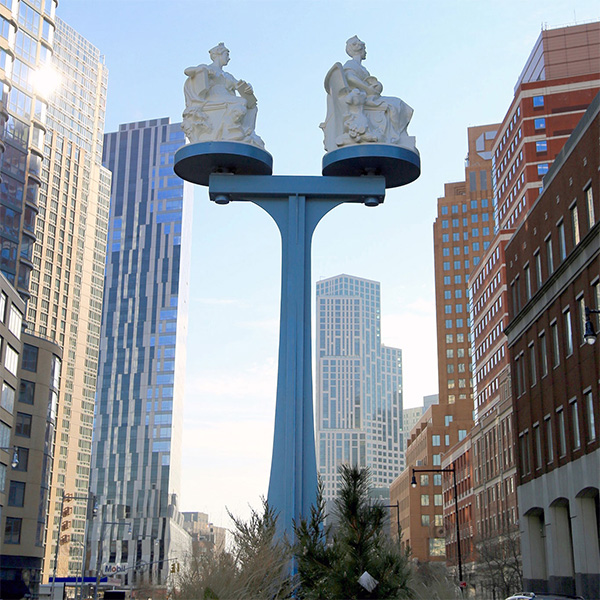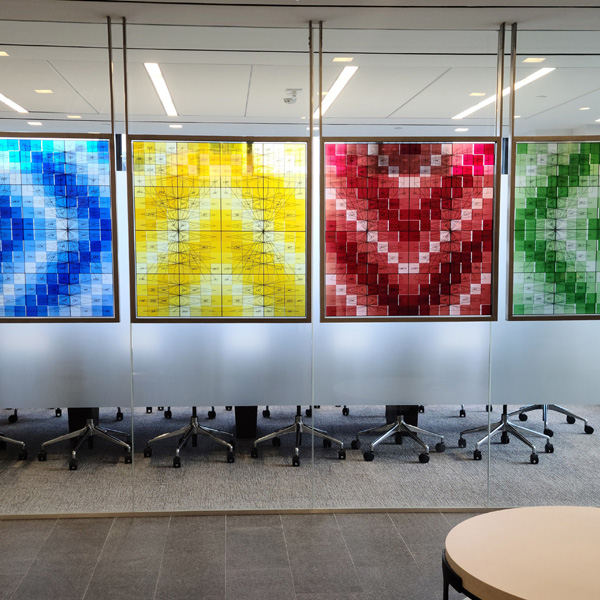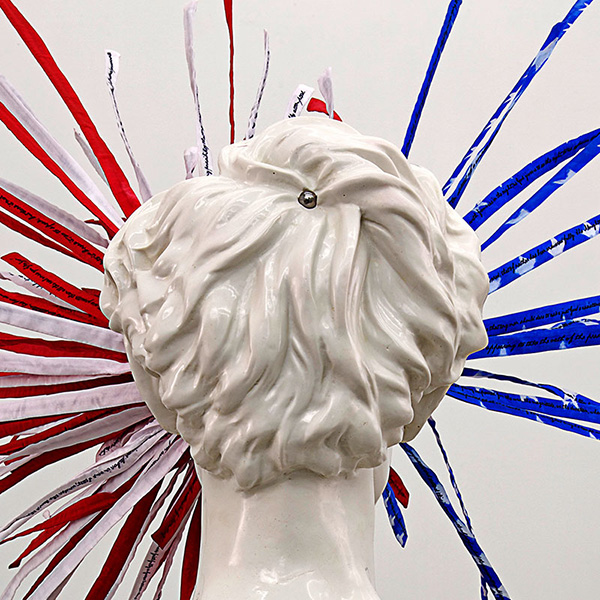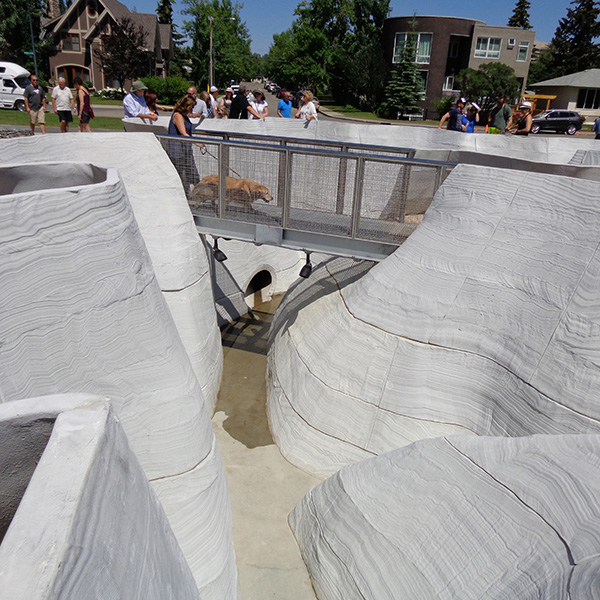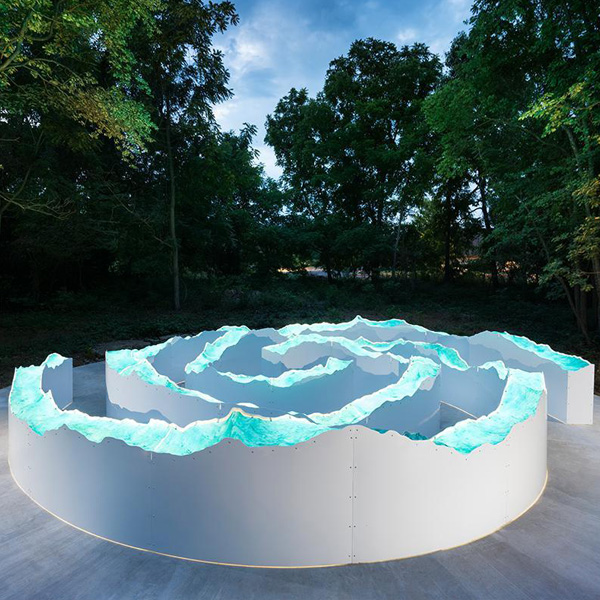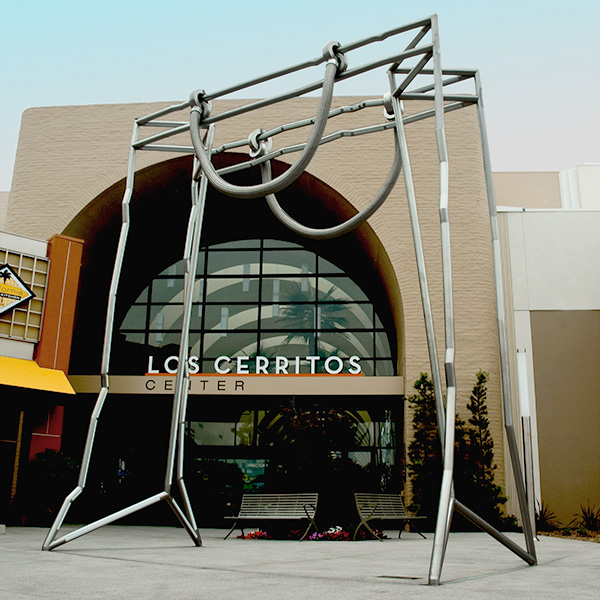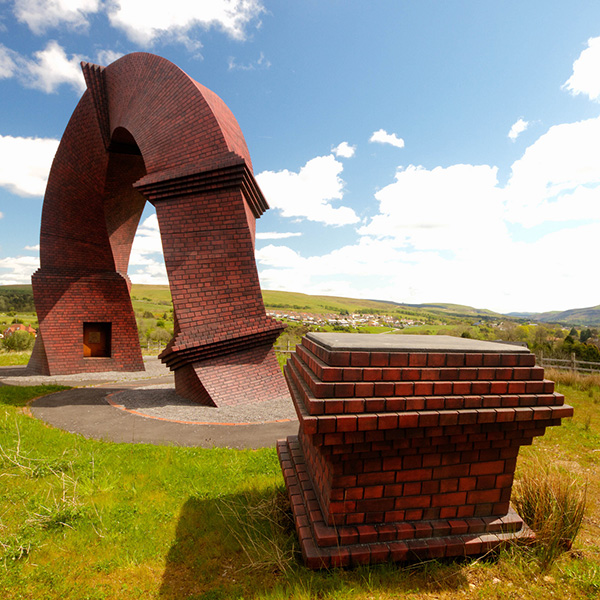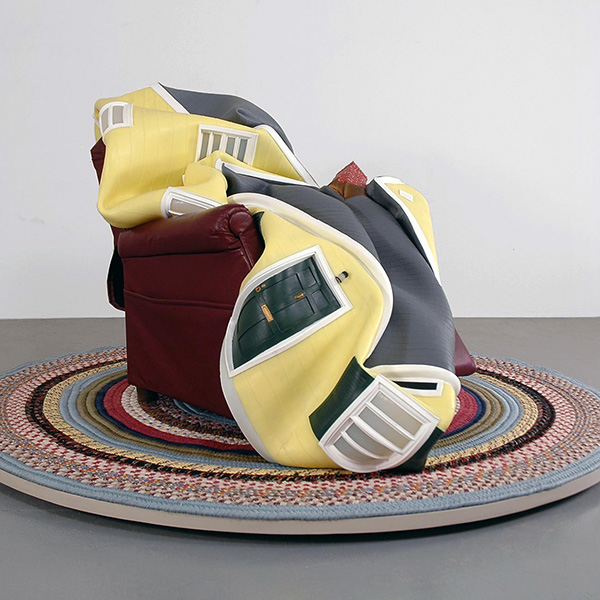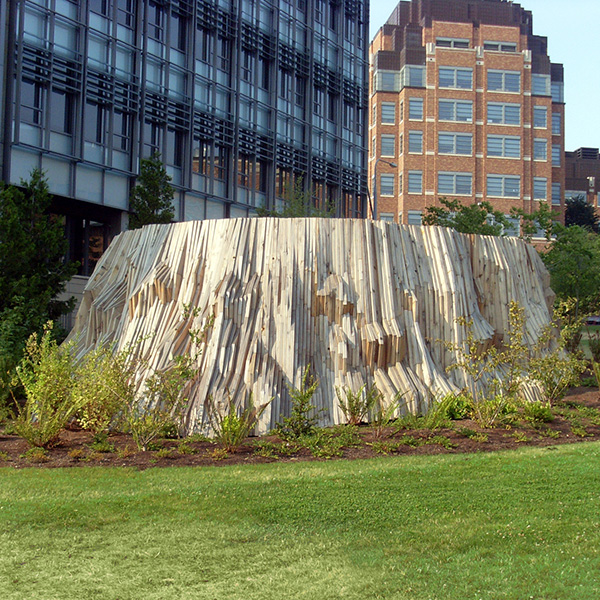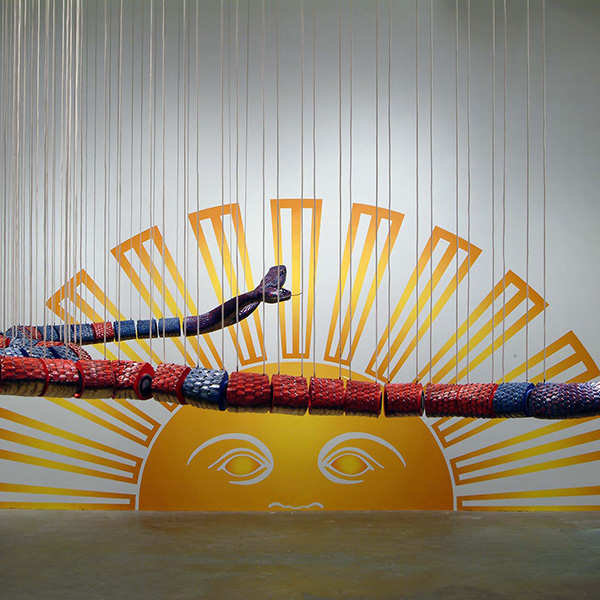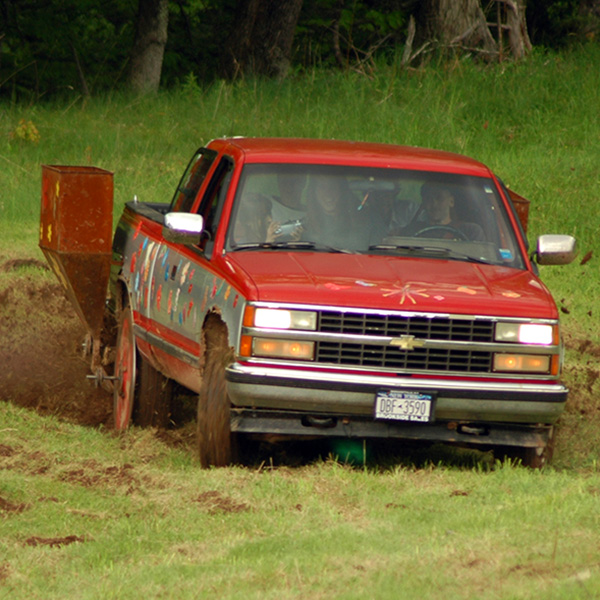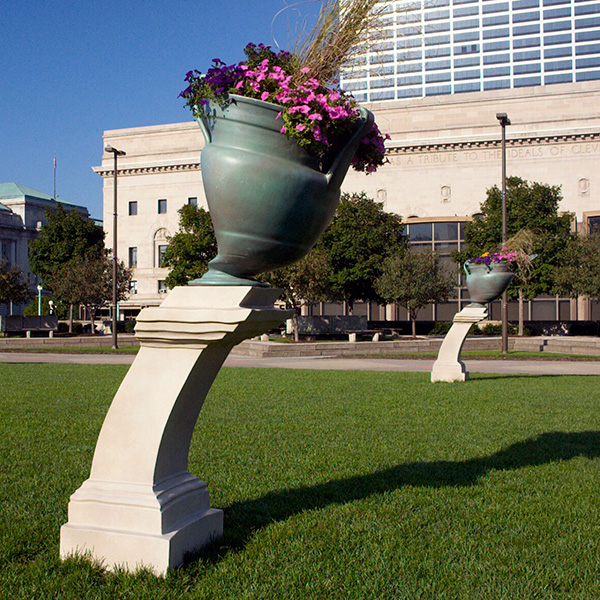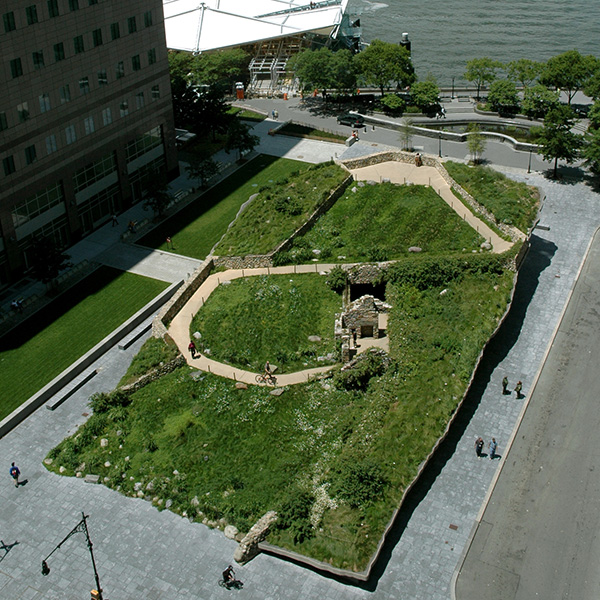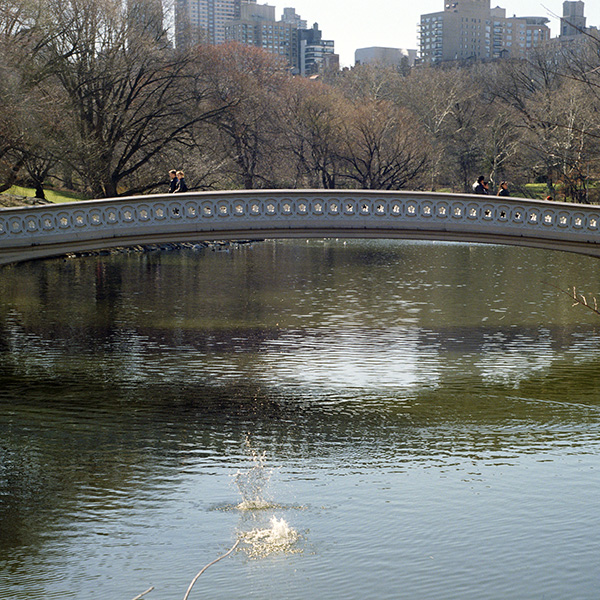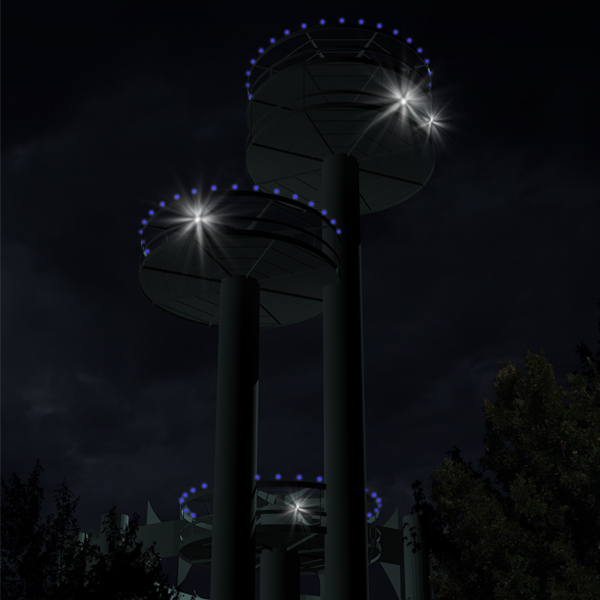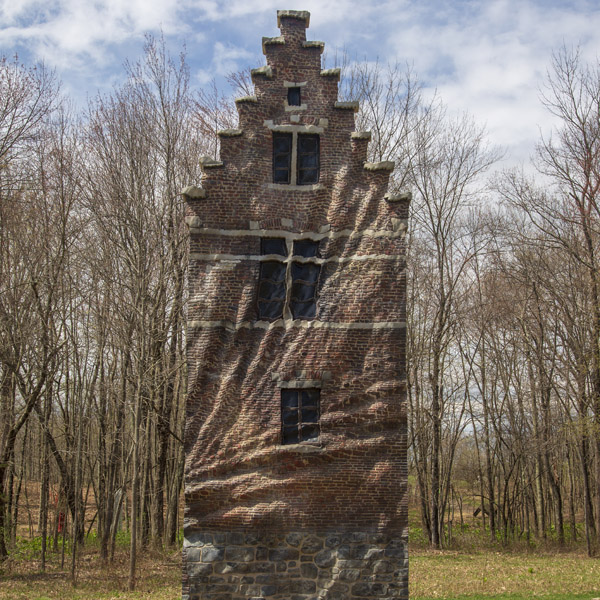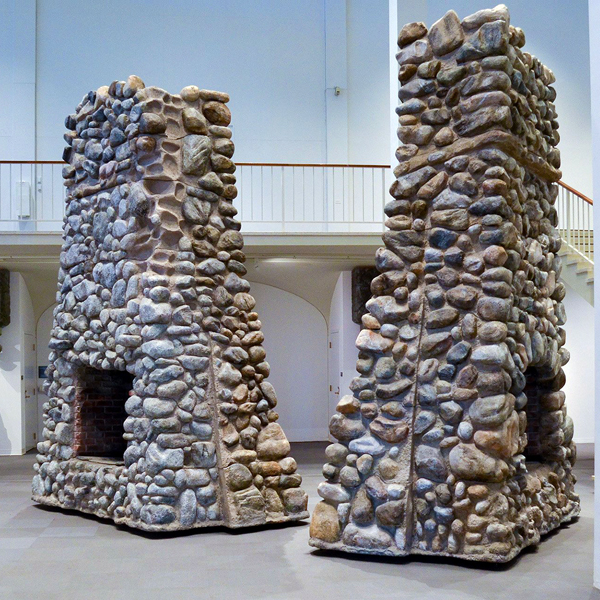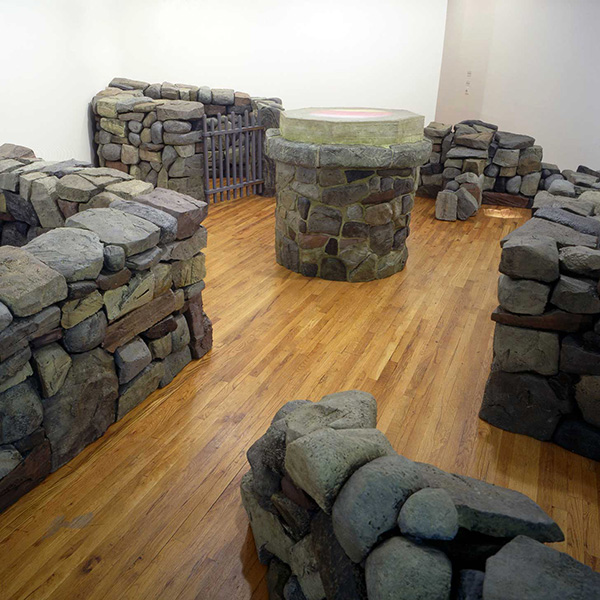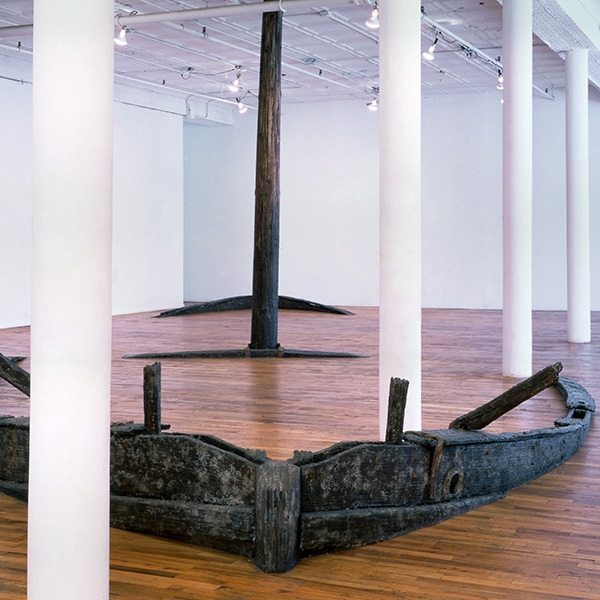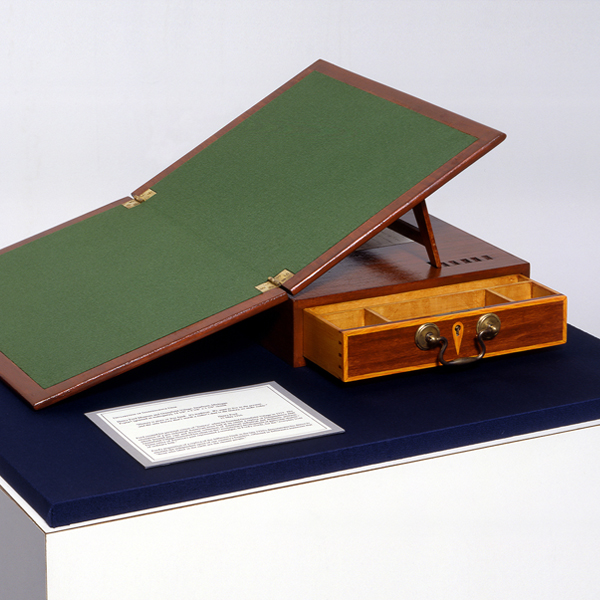In 1961 Robert Moses ordered the demolition of the Brooklyn entrance to the Manhattan Bridge. Two allegorical sculptures representing Brooklyn and Manhattan were relocated to the Brooklyn Museum. In this project Tolle brings contemporary replicas of the figures cast in translucent fiberglass resin, close to their original site, where they spin in a perpetual dance above the street. The project addresses both the original loss and the cultural climate that allowed it. In 1961 these public art works were seen as an obstacle in the way of progress, but today urban designers are providing new and innovative places thus re-establishing the power of art in our cities public spaces. view on map
Each work in Tolle's show focuses on one president and is numerically titled according to his place in the line of presidents: George Washington is “No. 1” (2012), Barack Obama is “No. 44” (2012). Tolle highlights the importance of each man's mind and political doctrine, and how these legacies are the continued responsibility of their successors. Each also includes ephemera associated with that particular presidency. A number of the sculptural components are culled from the internet and are vestiges of Americana craft practices, many of which have now been discontinued. This gesture is a play on our historical memory and points to the fact that what is relevant about each president can be distilled, over time, to just a few singular events or attributes. How these cultural relics are integrated into popular memory and, in turn, our consumer market, is central to the artist's interest. Through Tolle's historical eye, we are asked to question how we recall our national history, and more importantly how popular culture and political rhetoric inform and simplify our opinions.
Outflow is a sculpture integrated into Calgary’s existing storm water system. The form of the artwork is an inverted replica of Mount PeeChee, the third highest peak in the Bow River watershed. It memorializes the glacial origins of the Bow and how it has shaped the city over millennia. As you watch storm water travel from the surrounding community through the art work and into the Bow via an outfall, the viewer can visualize the journey of the river and gain insight into the impact humans have on its health. Outflow, cast in high performance concrete, daylights the outfall allowing volatile chemicals to gas off as well as capture solid waste before it enters the river. Surrounding walking trails pass through the work via a stainless steel bridge. The integrated sculpture and upgraded outfall highlight the delicate balance between the natural watershed and the built environment. view on map
The first Karankawa, so the legend goes, was the child of the sun god and moon goddess, and his cradle an oyster shell that rocked gently upon a cloud. One day, while his parents quarreled, the cradle was knocked from the sky and fell into the Gulf of Mexico; the tears of the goddess account for seasonally abundant rainfall along the coast. I was asked to create a mechanical fountain. Research revealed that such fountains waste needed water during the dry season. In response I replaced an existing rain scupper with a giant oyster shell to create a passive fountain using rainwater from the roof which pours onto a pile of caste aluminum shells. The Karankawa, now an extinct people moved their camps seasonally to and from the shore between Galvaston and Houston. Shell mounds are among the only artifacts they left behind.view on map
“Crystal Bridges Museum sits at the base of a ravine with water flowing under and around its eight pavilions. The contours of the building seem to mimic the surrounding landscape, and intentionally so.” Tempest is a shimmering blue green expanse, which appears to have been carved from water, frozen in space and time, in the form of a swirling celestial maze. Visitors are free to wander through the waves looking as though they are bobbing in the surf or frolicking in pool. At night the sculpture is lit from within making it appear as a magical river of light and serving as a beacon and landmark. This sculpture was shaped using cutting edge 3D modeling techniques to simulate the undulating watery surface. The wave algorithms were output using CNC milling machines and cast as panels in ocean blue fiberglass resin. These modules were mounted into a housing constructed of rolled and welded aluminum flame cut to reveal the waves in section.view on map
The sculpture’s placement at the entrance of the Los Cerritos Centre, functions as an interactive gateway to the Centre. It invites the public to enter and interact with it, both as the consumer and the consumed, forging a relationship between them and the site. The bag is a tangible representation of physical retail shopping. It becomes an icon to the idea of shopping in the “real” as opposed to online. The piece is transformed at night and is capable of expressing a full range of color using LED lights and a computer controller. The project also serves as a monument to Walter H. Deubner who invented the shopping bag in the 19th century.view on map
The brick smokestacks of the 19th century were architectural marvels. The best of them were sculptures in their own right. Modeled after one of the fallen giants, the sculpture rises from a hill side in South Wales. Unlike the towers of old that pointed to the sky pumping smoke and other pollutants into the atmosphere, the stack twists and turns downward plunging back into the ground. This turning of the head of the chimney refers to modern technologies designed to stop global warming by pumping CO2 back into the earth. By reconnecting the stack with the ground a fantastical gateway is formed. The arch will be tall enough to allow pedestrians and cyclists to pass under it. The mouth of the stack reemerges from the ground a short distance away. Where once there had been smoke there is a garden pointing toward the green past and future of Wales. view on map
Levittown, a planned housing community in Long Island, New York, designed and built by Abraham Levitt between 1947 and 1951 became the archetype of American suburban life in the early 1950s. Inspired by that community, Tolle has created cast silicone versions of the original Levittown houses. Like the thousands that were mass produced and assembled on blighted farmland sixty years ago, each is structurally identical – cast from the same mold varying only in color scheme. Without any means of internal support, the rubber houses are each draped over different appropriated mementos of suburban life. Within each pairing, the found object and pliable architectural rendition inform each other; at times, they exemplify hidden social or political signifiers that might remain dormant outside of their union. Two defining cultural modes specific to American consumerism are presented: the seduction toward conformity or compliance with a mass-produced standard and the necessity to define one’s identity through the alteration or defiance of it.
Tolle created a monumental tree stump modeled after what had been the largest standing Western Red Cedar (the Quinault Cedar), which is 26 feet in diameter. The sculpture functions as an observation platform. Its great size evokes the scale of the old growth trees that once covered the campus. Constructed from milled cedar lumber (2x6 the most commonly used dimension), the staggered planks interweave the pixilated language of digital imagery with essential materials. view on map
Consisting of two fiberglass panels set into the wall, Threshold depicts a single moment of a surface seemingly in motion. Installed in the New School University's Dorothy H. Hirshon Suite, a multi-use meeting room, it is a plastic, sensuous rendition of the dialectic of transparency and opacity permeating such spaces. Threshold makes physical the impact and power that words uttered in the room may have on those who occupy it. view on map
The ICA in Philadelphia commissioned Tolle to make a special project in response to the tercentenary of Benjamin Franklin’s birth. Tolle created a series of images that cast this luminary historical figure in a contemporary light. An electric snake fashioned after Franklin's famous political cartoon "Join or Die,” hangs in front of a sun that could be rising or setting; and a portrait of Franklin made of quotes paying tribute to his radical ideas about authorship. The exhibit is a product of extensive research and re-imagining, executed with a combination of complex handcraft and high-tech production.
Tolle and Balmori careened around a grassy field doing doughnuts in a red Chevy pickup truck. Transformed into a hybrid plow and seeder, the truck inscribed circles into the earth while simultaneously releasing seeds.
"There’s an element of the spectacle, too, like in NASCAR or truck pulls at the county fair,” says Brian Tolle. “Skid Rows has entertainment value, but in the service of the most advanced planting techniques and a new mode of expression. In the end, you don’t get a big car crash or explosion. Once the event is over, you’re left with these lines in the ground, and if you were to happen to come back in a month or two, something will have happened. Instead of ruts, there will be a garden.”
Diana Balmori, Principal of Balmori Associates compares Skid Rows to a French Parterre de Broderies. She explains, “Ecology is embedded in our project: planting without plowing. Plowing can be seen as destructive, breaking the soil’s structure and resulting in soil erosion. Therefore, we used direct sowing instead. The ecology here enabled us to come up with new landscape forms.”
Responding to Cleveland’s Mall B classical history as a civic space in Daniel Burnham’s Group Plan of 1903, Tolle inventively recreated traditional Beaux Arts style garden urns. The sculptural urns appear to be reacting to the forces of the wind off Lake Erie, playfully transforming the expected strength and symmetry of their Neo-Classical design. The sculptures were created digitally and subjected virtually to simulated wind distorting their original forms.
The memorial objectifies a rugged Irish landscape with stone walls, abandoned potato fields, and native Irish plants and grasses. A famine-era cottage from County Mayo, Ireland, which was donated to the project and reconstructed into the Memorial, anchors this landscape. The landscape cantilevers out over a base made of alternating bands of stone and illuminated glass, which presents text chosen from a wide variety of sources to focus on The Great Hunger within the wider context of hunger world-wide. view on map
Waylay consists 75 computer-controlled splashes. To the unsuspecting passerby, the unpredictable splashes seemed to be caused by unidentified objects falling from the sky or exploding from beneath the water’s surface. Waylay subtly awakens more recent feelings of anxiety concerning potential dangers falling from above and tests our relationship to the designed “natural” environment, challenging what we consider to be normal and ordinary or natural.
Playing on the original light plan for these landmark towers from Phillip Johnson’s New York State Pavilion for the 1964 World’s Fair, Tolle’s blue lights and intermittent flashes recall the awed tourists who snapped souvenirs from the now inaccessible towers. With a ghostly suggestion of the past lit up, Tolle questions and restores a futuristic design, an outmoded interpretation of a future that never came to pass. view site on map
Commissioned by curator Jan Hoet for his exhibition titled “Over the Edges,” Tolle replaced the façade of a 17th-century Flemish canal house with a three-dimensional version of its reflection in the water below, blurring the border between architecture and its environment. Using a computer, the façade was built virtually and distorted with wave algorithms before being output in Styrofoam. The reflection of the house in the water - rippling as in a boat’s wake - is permanently frozen in physical form on the sculpture, which Tolle installed over the referenced building façade at full scale.
The gunboat Philadelphia, commissioned by Benedict Arnold during the Revolutionary War, sank in her first encounter with the British. It remained at the bottom of Lake Champlain until it was raised in 1935. Tolle recreates the moment it breaks the waters surface. Once freed from the lake the Philadelphia rose to become an artifact – poised, as in Tolle’s piece, in the act of becoming a work of art.
